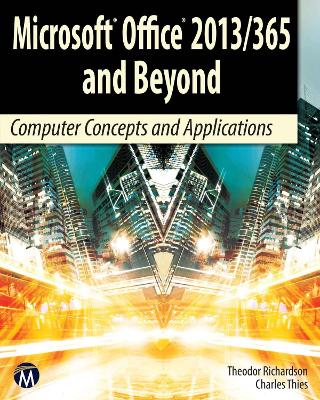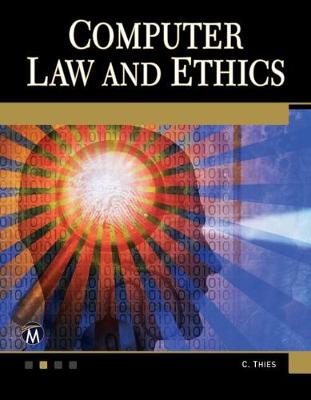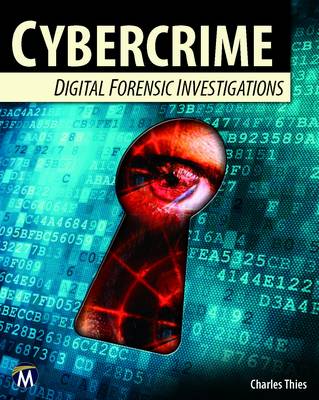Computer Science
3 total works
Microsoft Office 2013/365 and Beyond
by Theodor Richardson and Charles Thies
Published 10 March 2015
Microsoft Office 2013/365 and Beyond is divided into five sections with 16 chapters that progressively introduce you to computer concepts from the moment you hit the power button all the way through to using a variety of productivity software applications available in Microsoft Office 2013 and Microsoft Office for Mac 2011. The focus of this text is to provide readers with the skills needed to discuss essential computer concepts, navigate and conduct basic tasks using an operating system, and develop files using basic productivity applications. The companion disc includes all of the files needed to complete the chapter exercises within the text. You will also find video tutorials, a repository of high-resolution images from the chapters, and samples of completed projects for comparison.
Features:
Features:
- Designed to address the Windows operating system and the 2013 Microsoft Office application suite
- Integrates the use of both MacOS and OpenOffice into the text to describe the respective concepts in Windows and Microsoft Office (MS Outlook, Word, PowerPoint & Excel)
- Includes a dynamic 4-color design with supplementary video tutorials to enhance the learning process
- Discusses common computer applications, including Adobe Reader (for reading PDF files) and Microsoft OneNote for Windows (for managing files). Additional productivity tools like OpenOffice.org are presented
- Includes a comprehensive DVD with sample tutorial videos, project files from the text, figures, Excel functions and formulas, and MS Office shortcuts
- Numerous instructor supplements and companion Web site available upon adoption
This text covers the introduction to modern computer law and ethics. The strategy for this text is to present a case study for a legal topic in each chapter, followed by the corresponding theory relating to ethics within the field of information technology. The text also covers legal-related topics such as intellectual capital, constitutional law, virtual environments, digital forensic investigations, and computer crime. Completing the text will provide the reader with a theoretical and practical understanding of the modern legal environment and ethics related to the field of information technology. It presents the theoretical background concerning ethics and reinforces these concepts in each chapter with modern case studies. It covers the technical aspects of digital forensic investigation to include presentation of the evidence in the courts. It discusses intellectual capital and the legal environment within the virtual environment. Companion DVD includes forensic software, cases, resources.
This text covers the introduction to digital forensic investigations while applying the rules of evidence and procedure specific to digital evidence. The strategy for this text is to introduce cybercrime, computer law, and the application of the rules of evidence and procedure related to digital investigations. The text also covers the technical aspects of the investigation that includes an examination of the digital evidence, managing the investigation, and presentation of the evidence in the courts. The text includes case studies that are used to reinforce learning. Completing the text will provide the student with a practical hands-on approach to conducting computer investigations involving electronic evidence. It covers the technical aspects of the investigation which includes an examination of the digital evidence, managing the investigation, and presentation of the evidence in the courts. It includes techniques covering Windows, Linux, and Macintosh platforms and digital forensics in network, mobile, and Cloud investigations. It uses latest software and hardware to conduct digital investigations. Companion DVD includes forensic software, cases, and resources.


